Sales planning is simple to understand but complex to execute. The main thought in the sales planning process is how much effort you need to spend to sell your product. The sales planning process consists of two key factors, selling activity and forecasting yield.
For example, a salesperson must understand how expensive it is to convert one prospect into a buyer. Generally, this means understanding the marketing costs and human resources associated with bringing in a customer.
Plenty goes into a sales plan creation, but not many understand how fundamentally important it is for the success of a business or salesperson. A sales plan consists of multiple parts and strategies but can be simplified depending on the salesperson’s goal.
Here are the main strategies you want to consider if you are trying to create a great sales plan:
- Target audience identification
- Sales forecasting & budget planning
- Marketing campaign
- Competitor analysis
- Customer analysis
- Data-driven decision making
- Relationship building
There is a lot to break down, but you will be in great shape once you learn.
Targeted Audience Identification
The first and one of the most common strategies is considering your target audience. Knowing your target audience opens a gateway to answering three critical questions about your sales plan.
- Whom you are selling to: It is important to understand whom you will sell to because of the amount of time and resources it takes to close a sale. You do not want to waste time selling to those who do not care about your product or service.
- Where you are selling: Picking the right location can make or break plenty of businesses. Consider your current location and ask yourself if you get enough traffic or if you are reaching your right target audience.
- How to sell to that person: Finally, you have to find an effective method of selling and closing the deal with the prospects you find. Your end goal is to turn these people you find into paying customers who trust you.
To properly identify these key points, you should begin segmenting your target audience. Segmenting your audience means splitting your target audience into groups based on their interests.
For example, you are separating people who want to buy computers and those who wish to buy gardening equipment.
Separating your target audience lets you formulate a better sales strategy since you can tailor it around the wants and needs of your segmented target audience.
Sales Forecasting and Budget Planning
Budgeting and understanding forecasting are the core essentials of a great sales plan. You must monitor your expenses and set realistic sales goals that match your inputs. Here is an example, if you spend $100,000 on marketing, you would want a minimum output of $100,001 of product sold.
While this example is more extreme, you always want to budget your money to gain a favorable edge in your outputs and inputs. You do not want to spend more money than you are making, and that is why budgeting becomes critical to a sales plan.
Additionally, while sales forecasting is complex on its own, you will focus on creating reasonable predictions based on objective facts. Let’s say you own a small car wash. You can only reasonably service two cars per hour, meaning if you work around the clock, that is 48 cars.
Therefore, you can make a reasonable sales forecast around the maximum number of cars you can service daily instead of working off nothing. From there, you can set reasonable sales goals within your sales plan for monthly, weekly, and yearly quotas.
Marketing Campaign Development
A business needs to develop a marketing strategy that directly supports its sales plan. Aligning your sales and marketing efforts makes for an easier way to maximize your campaign efficiencies.
The best way to develop a marketing campaign that aligns with your sales plan is by understanding your goals, prospects, and target audience. Consider why someone would be interested in your product and what would entice them to buy it.
Then develop the best method to close the deal. How can you sell your product to that prospect, and what is your best deal for them? Consider that when developing the sales plan side of your campaign.
If you are having trouble understanding how a marketing campaign and the sales plan work together, think about it this way. Your marketing plan focuses on identifying and reaching out to consumers, while your sales plan focuses on closing the deals and selling the product.
Another way to think about it is that one gathers and provides information, and the other focuses on action and generating revenue. That is why aligning your marketing campaign with your sales plan is important.
Competition Analysis
You cannot forget to complete your competitor analysis if you want to create a cohesive sales plan. Analyzing your competition is important to help understand your competitor’s strengths and weaknesses.
If you do not constantly keep track of your competitors, you will be left in the dust and no longer pose a threat to your competition. To continue being an active competitor in your market, you must understand how to analyze your competitors.
First, assess the strengths of your competitors. Ask yourself these questions and answer them:
- What does my competitor do better than me?
- Why do customers prefer my competitor over my product?
- What do they do differently?
- Am I a threat to them?
- How effective is their marketing?
- Does their location provide an advantage?
- How do they price their product?
When you ask yourself these questions, you are left with answers that will help you organize and understand how strong of a position your competitors are in and where you stand when compared to them.
You will also be able to identify your own strengths and capitalize on your competitive advantages. For example, maybe your margins are stronger, so you can afford to adjust your prices better, or maybe your location gives you a better chance to attract customers.
Prospect Qualification Strategies
Another important strategy to master is vetting and qualifying your prospects properly. Time is money, and you do not want to spend too much effort on customers who will not buy from you. Qualifying sales leads helps determine your ideal customer.
To determine your ideal customer, you want to create an ideal customer profile, otherwise known as an ICP. Your goal is to determine which prospect will most likely purchase from you and how you can actively sway them to buy from your business.
Next, you want to determine how much it will cost to generate those leads and seal the deal with your customer. Additionally, you want to figure out how long it will take to qualify your sales leads properly. Doing this will help you adjust your price and resources.
Pipeline Management and Monitoring
When you hear people discussing their sales pipeline, they’re essentially talking about a visual representation of the sales process of their business. For example, generate product interest, market to target audience, and convert prospects into customers. It can be as simple as that.
You can make your sales pipeline complex or simple, but it should still be easy to understand, manage, and monitor for your team members. To create an effective sales pipeline, you must consider the basic stages of a sales pipeline.
- Contact
- Identification
- Evaluation
- Intent
- Deal
- Customer Loyalty
Each step within a sales pipeline contributes to finalizing a sale and increasing customer relations. With this visual representation, you can look deeper into where you are failing and why. Are you not closing any deals?
Then it would be best to reevaluate things at the evaluation step within your sales pipeline. You will also use KPIs to help gauge and measure whether your sales pipeline is healthy and your team is performing to the best of their ability.
KPIs are an excellent way to monitor and manage your sales pipeline since they show how well your salespeople are doing. Consider looking at each part of your sales pipeline in-depth and understand the key factors necessary to move down the pipeline without issue.
Data-Driven Decision-Making
If you are going to create a great sales plan, you are going to need plenty of data. Businesses tend to make decisions based on data, because numbers are simple to understand. Data-driven decision-making uses data to make well-informed business decisions.
Most businesses use data to identify and address areas where the business can improve, whether those areas are in your sales pipeline or customer relations.
The best way to collect data is through surveys, digital marketing analytics, and web traffic. There are plenty of other methods for collecting data, but these methods are simple, effective, and practical for every business.
Effective Communication and Negotiation Tactics
While data-driven decisions and KPIs are crucial to optimizing your sales force, nothing beats old-fashioned communication. Remember that customer relations are extremely important, do not look at your customer or prospect as walking dollar signs. See them as people that need you.
Every business offers something to its customers to help them solve a problem. You are here to improve their lives and gain a profit from it, so people must see that. It would be best if you build trust before closing any deal with a customer. Here are some tips on how to do that.
- Remain credible: Always maintain your credibility. This means being honest, kind, and understanding. Do not use shady underhand tactics to close deals. One quick sale is not worth it.
- Maintain eye contact: If you are trying to sell directly to a customer, try your best to maintain eye contact. It is subtle, but eye contact shows empathy and shows that your focus is on them and their needs.
- Connect with them: Try connecting with your prospects in a way that lets them know you are someone who has their best interest in mind. Being transparent and talking to the ideal prospects helps form connections faster.
- Do not withhold information: You must not hide your intentions when negotiating. You must not lie about costs, quality, and what your product or service can do for the customer. Lying will damage your credibility and lose you more than just that sale.
Identifying Customer Pain Points and Solutions
To better sell your products and services, you must actively solve problems for your customers. You must develop solutions to address customer pain points, such as the buying process, customer service experience, and product or service quality.
The best way to help identify customer pain points is via surveys and paying attention to social media mentions of your product and service. Reviews have become imperative to the buying process, so paying attention to customer reviews is critical to identifying customer pain points.
Another important tactic is positioning your product or service as the absolute best solution for your customer’s problems. The best way to do this is to provide a service or experience within a niche market.
Competing for dominance in a saturated market is extremely difficult and rarely worth the trouble for most competitors. Instead of focusing on denting a saturated market, develop a solution for a niche market.
An example of this is software-as-a-service. SaaS focuses on providing unique and creative solutions to its clients. SaaS products have seen plenty of success because they directly target their customers and establish a foothold in certain market niches.
Utilizing Technology To Improve Efficiency and Effectiveness
Here is something that you may be neglecting within your sales strategy – technology. Today, CRM tools and accounting software have become a staple for most businesses. Believe it or not, to compete with the best, you must properly use technology for your sales plan.
Technology has become vital to a business’s success because of the time and money it saves. For example, sales tools like Semrush and Mailchimp automate entire marketing processes, such as email marketing campaigns.
Instead of focusing on creating invoices, emailing clients, and collecting data, you can take time to plan out marketing campaigns and interpret the data that your software tools automatically gather. Automation truly changes how productive a salesperson can be.
Establishing Long-Term Relationships
You must establish long-term customer relationships if you plan to continue your business beyond your first few sales. Creating long-term relationships provides you with plenty of advantages and is imperative to the longevity of your sales career.
Since customer relationship building is so important, you should create a cohesive and easy-to-understand customer relations strategy within your sales plan. Depending on your product, service, and location, your strategy may vary, but here are some ideas to help get you started.
If you are trying to build a customer-centric company culture, your best bet is to incorporate a strategy that involves direct interactions with prospects and customers. You can do this by promoting interactive demos and other customer service methods.
Additionally, since your main goal is to build customer loyalty, you have to start looking into strategies that help improve your brand image and incentives for customers buying directly from you over other competitors.
Personalizing services and marketing campaigns is one-way businesses build brand loyalty, but another comes from direct interaction with their customers via social media and interactive marketing campaigns.
Another approach businesses take comes from offering rewards or creating a loyalty program for their customers. If your business can take advantage of creating a loyalty rewards program, then by all means, give it a shot.
Conclusion
Remember that the art of sales planning does not end with closing a deal. It starts with it. You want to aim to continue outpacing your competitors and providing the best service possible to all of your customers.
Your goals should be to properly identify your prospects, provide value, and build long-term relationships. Use technology to your advantage, and remember to properly align your marketing efforts with your sales plan.
If you want to delve into these strategies more, there is plenty of information out there, but you have the basics to get you started. Focus on mastering these key strategies and continue to adapt and evolve along with your sales plan.
 Account Login
Account Login






